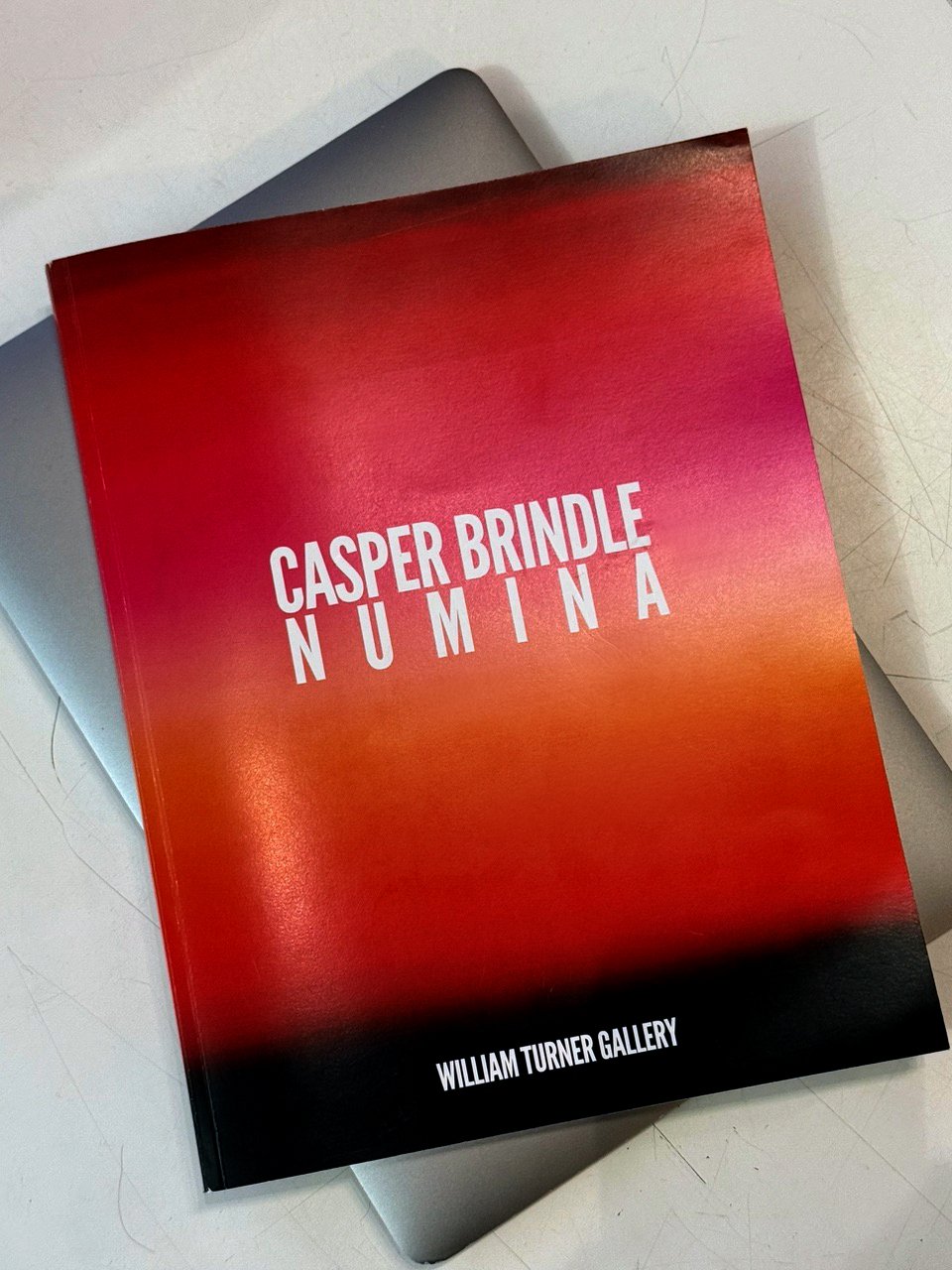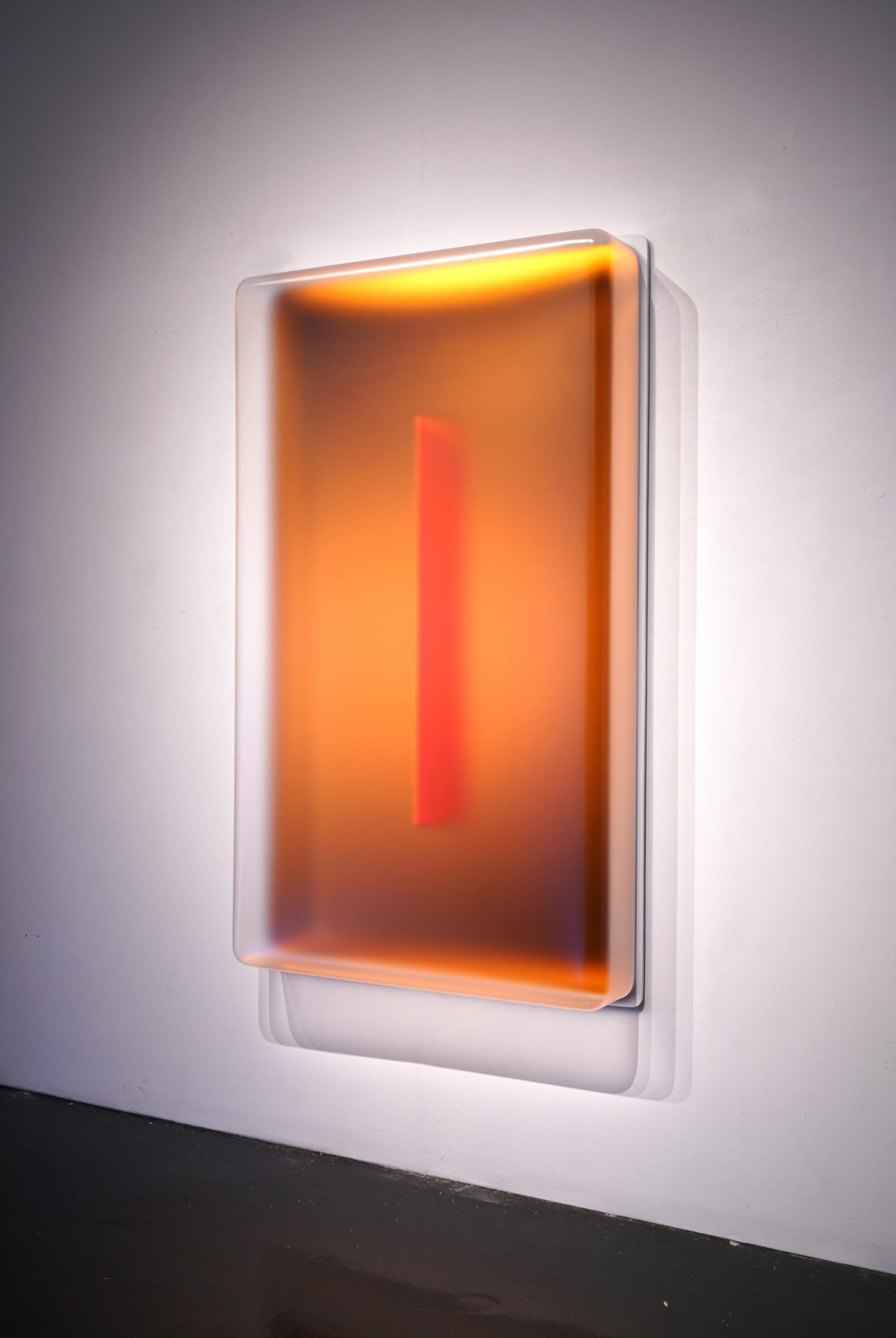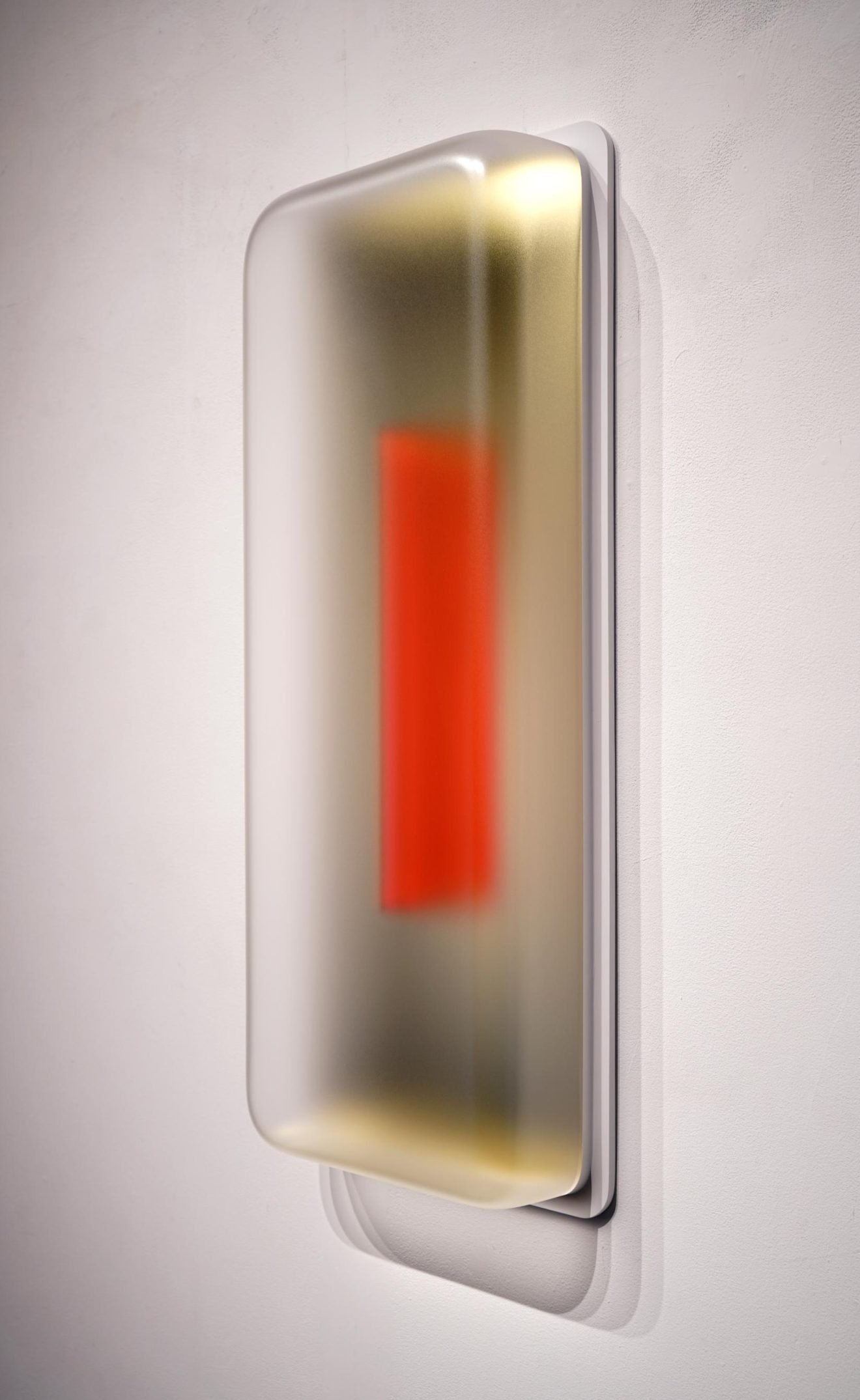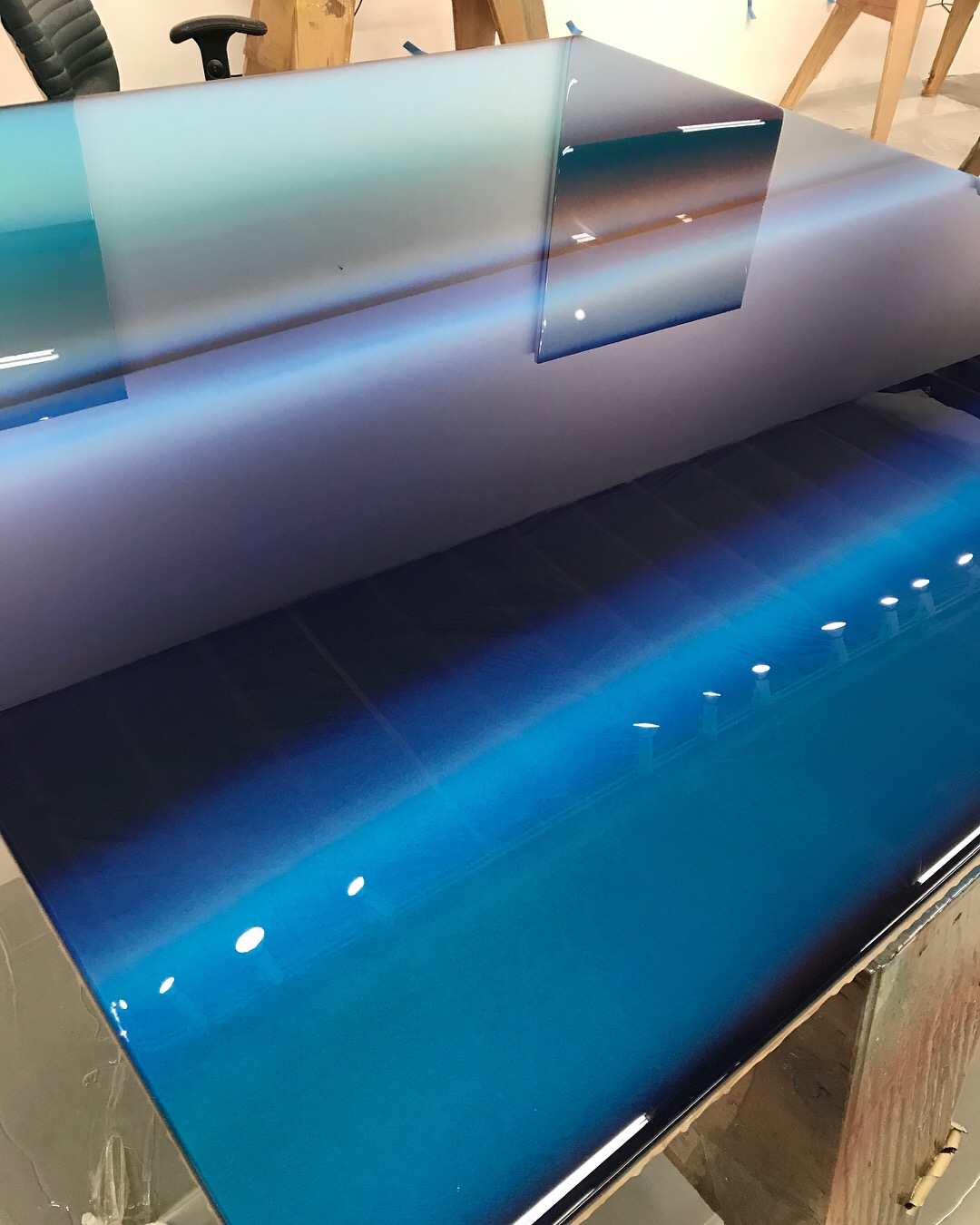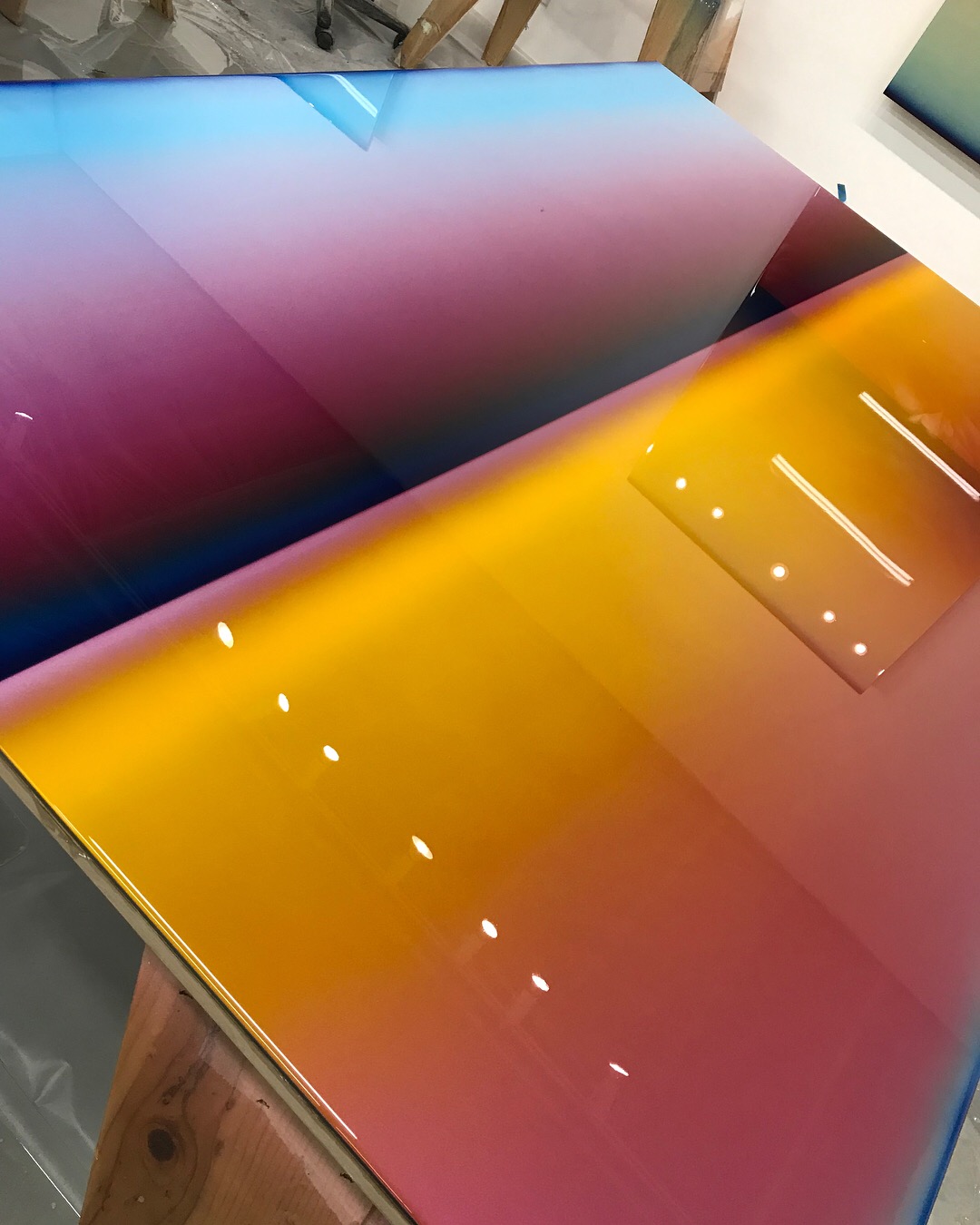Casper Brindle is convinced that he’s putting out some of his best work yet in his latest exhibition at William Turner Gallery in Santa Monica.
The artist, who began painting in the 1980s and is a disciple of the Light and Space art movement in Los Angeles, has woven a Southern California influence through all his work, whether the hot rod and surf culture found in his earlier work or the pure light in his latest exhibition.
“I think the light in LA is different than anywhere else in the world,” Brindle said. “This will be my best show yet. I’m really proud of this show.”
The show is called “Light | Glyphs” and will be on display through November 5. The series contains 25 pieces of which 15 will be shown at William Turner Gallery.
“Light is a huge part of my work in general and especially this body of work,” Brindle said. “I would say it is as important as the materials that I use, even more so. These works came to fruition just playing with light and seeing what happens with other materials. I started with light itself and manipulated the materials to do different things and bring different energies.”
Brindle, who was born in Toronto, moved to LA when he was 6 years old in the mid-1970s and he has lived there ever since. He was an apprentice to the Light and Space pioneer Eric Orr. He has exhibited on a regular basis at William Turner Gallery for more than 10 years and this is his 7th solo exhibition with the gallery.
A surfer, Brindle is constantly observing the play of light on water and how it expresses itself with color. Many of the works were done during the COVID lockdowns, something that Brindle said worked out to be a great thing for a lot of artists.
“Everything went on the backburner,” Brindle said. “You didn’t have to follow deadlines. You were kind of like, now it is time to really play with ideas and research and do the things that you can’t do when you have commitments and things like that.”
To create the works in this exhibit, Brindle used automotive paints, pigmented acrylic and metal leaf. The final works are 3 feet by 3 feet by 4 inches. He used translucent sculptural boxes which he air painted with diffused colors through the frosted surfaces.
The light in the colored background reflects in a quietly dramatic manner. In the center of each piece is a glyph, inspired by hieroglyphs that were ancient modes of communication, where symbols or marks were carved in relief to convey ideas.
Brindle’s glyph is a three-dimensional rectangle that intersects the center of the translucent box. The glyphs have been described as a beacon cutting through fog – quietly dramatic.
“I’m fascinated with hieroglyphs and how they used them to communicate,” Brindle said. “I use that as kind of a vehicle to do this newer work with glyphs. They go back awhile in the paintings.
There is just something that a spirit bigger than us is speaking to us. When I look at just a single glyph, it is speaking to that bigger power. I found that fascinating to use in the work.”
With Brindle’s use of gold and silver leaf to create the glyphs, he feels they really lend themselves to telling a story and he wanted to further the investigation into glyphs with these paintings.



